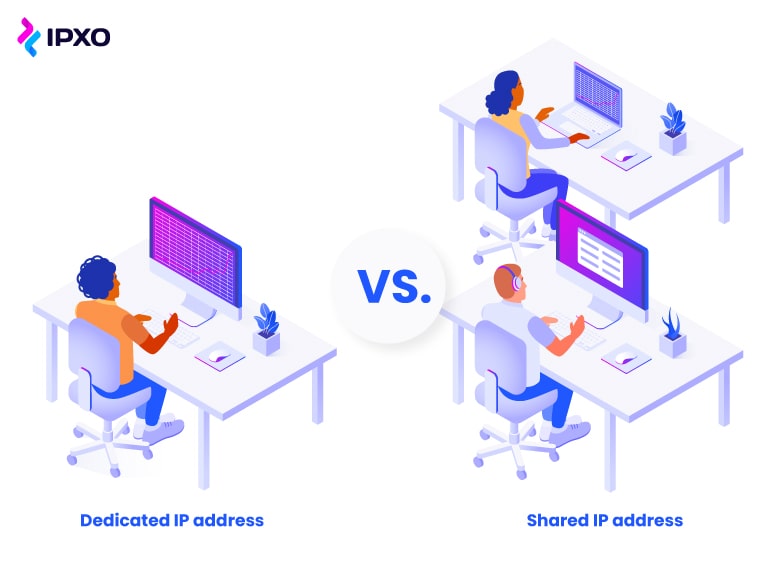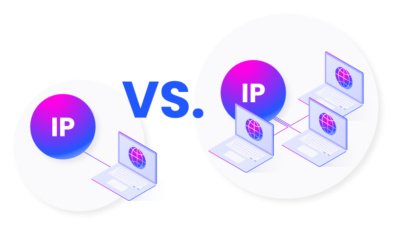IP Warming for Email Campaigns: What Is It and Why Is It Important?
What is IP address warming? How does it work? What kinds of challenges can you face when warming IPs? How can you benefit from this practice? We've got all the answers.

If your company wants to lead a successful email marketing campaign, you may need to implement Internet Protocol (IP) address warming – a gradual process that helps avoid email deliverability problems. This is important if you have a new IP address and need to establish your trustworthiness with internet service providers (ISP) as a new sender. Undoubtedly, IP warming is a tactic that every new email marketer should employ, but why exactly?
ISPs carefully track and sort-out bulk emails from new IPs with spam-blocking measures. Why? Because the number of spam emails sent per day is growing every year. For example, in 2021, it went over 88 billion. So, if you don’t want to fall into the ISP spam trap, you might need to warm your IP first.
Let’s dive in and discuss what IP warming is and how you can successfully warm your new internet numbers.
Key Takeaways
- IP address warming is important for successful email marketing campaigns, increased email deliverability and positive IP address reputation.
- Shared IP addresses do not require the warmup process, but they do not provide full control of IP trustworthiness, unlike dedicated IP addresses.
- Internet service providers can block IP addresses that do not have a positive email sender reputation and sending history.
- Warming internet numbers can be challenging, but with appropriate planning and the help of email service providers, the process can be smooth and efficient.
IP warming defined
IP warming is a method to establish the reputation of a new IP address without sending history. During the IP warming process, you gradually increase the volume of emails you send from your IP addresses. Why is this necessary? The gradual process helps to establish a good sender reputation before starting to send a larger volume of marketing emails.
More specifically, while gradually increasing email volume, you develop your sending credibility with ISPs. ISPs regularly check your IP address reputation according to several factors like spam reports, bounce rate and engagement rate. This information allows ISPs to decide if your emails are worth delivering and not spam-related.
For example, if your emails frequently bounce or receivers mark them as spam, a specific ISP might consider that you are a spammer and, consequently, block your IP. Therefore, it is crucial to send your emails to the interested subscribers one step at a time to improve deliverability, high engagement metrics and successful email marketing campaigns.

IP warming – slowly but surely
The key to successful IP warming is a steady increase in email volume. If you send bulk emails from a new IP that does not have an email sending reputation yet, a steep increase in mail volume might be suspicious. That’s because spammers usually take a single IP address and send a large number of emails until they completely damage the IP reputation.
When ISPs blocklist spam-related IP addresses, the wrong-doers jump to another IP to continue their fraudulent business. Therefore, many ISPs tend to carefully monitor and limit the number of transactional emails from new IPs with the help of spam traps that identify and block spam mail.
One more thing that ISPs evaluate is your commitment to providing relevant and valuable content to recipients. The more engagement you receive during the warm-up period, the more likely ISPs are to favor your IP. In turn, if your IP address has a good reputation, you can be sure that all your emails will reach the recipient’s inboxes.
Warming shared vs. dedicated IP addresses
Multiple customers of email service providers (ESP) can use a shared IP address at the same time. The group of shared IP addresses is called a shared IP pool. When several companies use the same IP address, warmup is not necessary. However, if you use a shared IP, you cannot take full control of your IP reputation because all other users of the same IP can also affect it.
Let’s say another company uses the address you both share for spam or other malicious purposes. Unfortunately, they can jeopardize your company’s email marketing reputation and cause deliverability issues. However, if you receive a shared IP that already has a good sender reputation with ISPs, you may improve the deliverability of your messages. Also, if you send small volumes of emails inconsistently and do not mind sharing the sender’s email reputation with others, this type of IP is a good option for your marketing campaigns.
On the other hand, a dedicated IP address belongs exclusively to your company. Needless to say, with a dedicated IP, you can control the emails you send from that address. Also, dedicated IPs are usually more suitable for companies that send high-volume email campaigns for a lot of active subscribers. And the best thing is that other companies’ shady emailing practices cannot affect your mail deliverability.
However, your new dedicated IP address has no sending history, which means you need to warm it up. As you now know, if you employ an IP warming process, it can help you increase your email deliverability.

How to warm up a new IP address
You can warm your new IP manually by developing a warmup schedule plan according to your goal. Why do you need a plan? With the appropriate IP warming strategy, you can establish a consistent emailing pattern and ramp up your sending volume to your anticipated full capacity. Also, your subscribers will know when to expect your letter, which might increase the acceptance rate.
If you have a long list of active subscribers, split it into several groups. Then, send messages to one of the groups for a few days. Continue sending messages at a steady growth rate for several weeks until you cover all subscribers. Eventually, you will be able to send emails to the entire list at once.
However, if you use an email client like Gmail or Yahoo, you might not be able to send the desired number of emails to your recipients immediately. Why? Email clients impose emailing limits to ensure accounts’ safety and systems’ efficiency. Therefore, there is a great chance you will start experiencing email deliverability issues.
An email service provider can help with IP warmup
It is not necessary to execute IP warmup yourself manually. Luckily, with the help of email service providers, you can reach all your subscribers and prove yourself as a legitimate sender. ESPs can provide tools and software that support the ramp-up period if you do not have the time and necessary software to plan your IP warming process.
Moreover, ESPs can help you monitor the IP warming process and critical metrics that determine success. The best thing is that reputable ESPs can assist you along the way by analyzing the data and providing recommendations for more successful IP warming.
In addition, some ESPs offer automatic IP warmup features to help you easily reach the maximum deliverability of your emails. By automatically warming your IP, you can reduce the number of errors and devote your precious time for other business operations.

IP warming challenges
Even if everything goes smoothly, there might be some challenges during the IP warming process. To successfully overcome any problems that might arise, you need to prepare in advance.
First and foremost, expect some deliverability issues during IP warming. Some ISPs may accept your email but place it into a spam folder. This happens if you are sending emails to Gmail or Yahoo. Luckily, that issue will clear up after some time with positive engagement metrics. Stick to your IP warming plan and make adjustments if necessary to achieve the full potential of your marketing campaign.
Another thing to anticipate is email blocking that might occur if your subscribers do not engage with your content. You should try to segment your receivers’ list again, double-check if all subscribers’ email addresses are valid and reduce the email send volume.
Note that if you decide to send your emails weekly, the process may take longer compared to daily emails. But remember, patience pays off: Be consistent and stick to your schedule that you developed for your specific campaign.
The ultimate challenge you might encounter is the constant monitoring of your IP reputation. Even after you finish IP warming, it might require additional time and effort from dedicated employees. Nonetheless, if you are successful, you can enjoy successful marketing campaigns that engage your subscribers and increase your revenue.
Common IP warming practices
While IP warming may seem complicated at first, you can make this process smoother and easier by preparing in advance and taking several aspects into consideration:
- IP warming schedule
- Email metrics
- Authentication protocols
First, develop an IP warming schedule that defines the volume of emails that you need to send in a specific period of time. Also, send relevant content to the most engaged subscribers first. This will ensure high engagement metrics and fewer spam reports.
While warming up your new IP addresses, track email metrics to ensure good sender reputation and deliverability. Pay attention to the bounce rate and spam complaints and take measures to improve your engagement data. For example, allow your subscribers to opt in or out of email marketing messages to reach only an interested audience.

A healthy list of subscribers means a more successful campaign and a better sender reputation. So, audit your email list regularly to verify that there are no old or invalid email addresses. Keeping your database clean may help you decrease the bounce rate.
Moreover, it is crucial to implement authentication protocols to verify that you are a reputable sender. You should consider these two protocols specifically: Sender Policy Framework (SPF) and Domain Keys Identified Mail (DKIM). Both protocols allow ISPs to authenticate the sender of the email and ensure that outgoing emails do not end up in a spam folder.
Note that it may take 4-8 weeks to build a desirable sending history and positive sender reputation with ISPs. The duration of the warmup period depends on the volume of emails you plan to send and your subscribers’ engagement.
How can companies benefit from IP warming?
If implemented in email marketing strategy, IP warming can unlock several benefits for any company:
- Optimized email marketing campaign
- High subscriber engagement
- Spotless domain and IP reputation
- Greater credibility of the company
IP warming is a good practice for businesses that recently employed email marketing as a communication medium. Also, this method can be helpful for companies that may not have sent any email from a particular IP for a long time. Re-engagement campaigns may help to filter out inactive subscribers and clean emailing lists for more successful promotion.
Alternatively, IP warming provides an opportunity to test and optimize your email marketing campaign. While sending small volumes, you can check your deliverability rates by campaign, date, time and make changes if need be.
One more advantage of IP warming is that it can help you improve the messaging and the content you send to your prospects. You can test your messages with a small group of subscribers and identify if they are engaging with them or not. Then, you can make changes to provide value in each message and win your entire subscriber database over time.
Furthermore, take into account your domain reputation, as it is equally crucial for successful email delivery. Poor engagement metrics, like spam complaints and bounce rate, can negatively affect your domain reputation. Therefore, you have to employ best emailing practices to keep both your domain and IP reputation spotless.
Eventually, once you build a perfect IP reputation in the eyes of ISPs, you can improve the credibility of your brand and company with your customers. Also, you might even boost your clients’ loyalty and, ultimately, the company’s revenue. But you should not forget to constantly maintain the spotless IP reputation that you built to achieve the best outcome.

Conclusion
Is your marketing campaign not performing well? Perhaps you received a new IP and sent out a large volume of emails at once. If that’s the case, chances are you are jeopardizing your sender’s trustworthiness with internet service providers even if you are not a spammer.
If you want to send large email volumes daily, you need to prove to internet service providers that you are a legitimate email sender to build a positive reputation. A good sender reputation with ISPs will ensure that your emails won’t land in the receiver’s spam folder.
How can you show that you are a reputable sender? You can build your IP trust by gradually increasing the send volume of your emails. You can do this by maintaining an IP warming plan for several weeks. During this time, you can evaluate the efficiency of your marketing campaign and make necessary adjustments to ensure the best possible email deliverability.
You can carry out IP warming yourself: Develop a plan, monitor your results and take action afterward. Alternatively, you can choose a reputable ESP that can provide you with all the necessary tools and help execute IP warming successfully.
Ultimately, if you employ the IP warming practice in your email marketing campaign, you will avoid spam traps, increase engagement metrics and improve the overall credibility of your brand, attract new potential customers and increase your business revenue in the long run.
Looking for clean and reputable IPs for email marketing purposes? The IPXO Marketplace can help you acquire IP assets quickly and cost-efficiently. Interested? Book a free demo to uncover the benefits of IP leasing.
About the author
Table of contents
Key Takeaways
IP warming defined
IP warming – slowly but surely
Warming shared vs. dedicated IP addresses
How to warm up a new IP address
An email service provider can help with IP warmup
IP warming challenges
Common IP warming practices
How can companies benefit from IP warming?
Conclusion
Related reading

Dedicated IP vs. Shared IP Addresses for Email Marketing
What are the roles of dedicated and shared IPs in email marketing? Which option offers more benefits for businesses? We have the answers for you.
Read more
IPv4 Packet Header: Format and Structure
When you think about it, the IPv4 packet format is truly fascinating. Learn about the elements at play with this comprehensive guide.
Read more
First Came IPv4, Then IPv6. What Happened to IPv5?
IPv4 and IPv6 are the only two versions of the Internet Protocol in use. Discover what happened to IPv5 and whether or not the current versions of the Internet…
Read moreSubscribe to the IPXO email and don’t miss any news!
